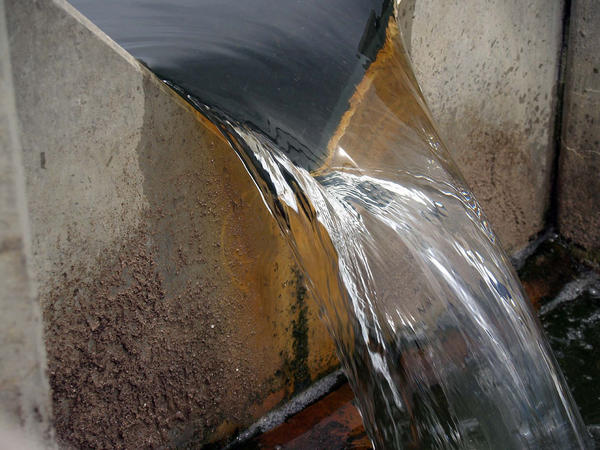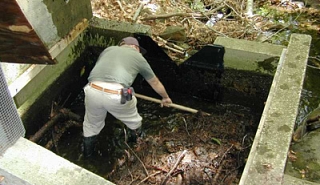 In talking with customers about weirs, we run into two common misconceptions. The first misconception is that weirs can read down to zero – that there is no minimum head. The second is that weirs are more accurate at these flows than flumes. Unfortunately, both assumptions are incorrect.
In talking with customers about weirs, we run into two common misconceptions. The first misconception is that weirs can read down to zero – that there is no minimum head. The second is that weirs are more accurate at these flows than flumes. Unfortunately, both assumptions are incorrect.
While a V-notch weir can read relatively low flows (a 22-1/2º V-notch can read down to 3.990 gpm [0.2518 l/s]), they cannot accurately read flow below this. The problem is the need for the flow over the weir crest to spring free. Below 0.2-feet [6.10 cm] there is insufficient head to ensure that the flow springs from the crest at all times. Flow may either alternate between between clinging to the downstream weir face and springing free or simply cling to the downstream weir face at all times.
Unfortunately for the proponents of all things weir, the 0.4-foot HS flume is accurate down to 0.0718 gpm [0.0045 l/s] and with a head of 0.12-inches [0.30 cm]. Even the 1-inch [2.54 cm] Parshall goes lower than the lowest V-notch weir both in terms of flow rate (1.460 gpm [0.0921 l/s]) and head (0.60-inches [1.52 cm]).
As for accuracy, when we compare weirs versus flumes, the numbers are not strikingly different.
| Primary Device | Accuracy |
| V-Notch Weirs | +/- 2% |
| Parshall Flumes | +/- 3-5% |
| HS / H / HL Flumes | +/- 3% |
| Trapezoidal Flumes | +/- 2-5% |
| Cutthroat Flumes | +/- 3% |
| Montana Flumes | +/- 3-5% |
| RBC Flumes | +/- 2% |
Remember too that weirs require approximately four times more head than a flume for a similar flow rate and they are very sensitive to poorly formed weir pools as well as debris, damage, or growth on the weir crest.





